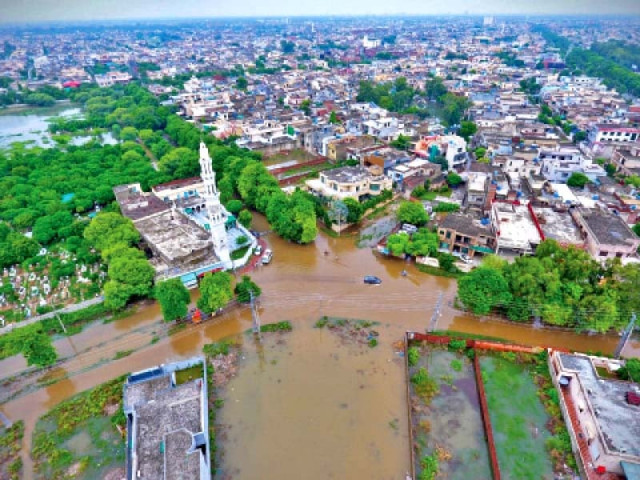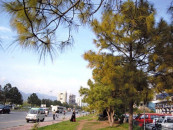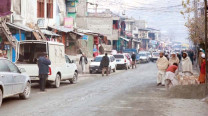50 killed so far in monsoon rains
Six more die in Punjab; bodies of 8 children recovered from Shangla landslide; KKH cut off at several places

At least six more deaths in rain-related incidents were reported from Punjab on Friday, as the overall death toll from the monsoon spell that triggered floods and landslides as well as collapsed roofs and walls up and down the country this month, rose to 50.
The majority of deaths occurred in Punjab – mainly because of electrocution and building collapses, official data showed. In Khyber-Pakhtunkhwa, the bodies of eight children were recovered from Thursday’s landslide in the Shangla district.
“Fifty deaths have been reported in different rain-related incidents all over Pakistan since the start of the monsoon on June 25,” a National Disaster Management Authority (NDMA) official told AFP, adding that 87 people were injured during this period.
Officials in Lahore said that the country’s second-largest city had received record-breaking rainfall on Wednesday, turning roads into rivers and leaving almost 35% population without electricity and water.
The monsoon set in on July 3, starting heavy showers in the upcountry areas. On July 5, at least seven people were killed in a record 291 millimetres of rain in Lahore.
The Provincial Disaster Management Authority (PDMA) said six more people died in the last 24 hours in Punjab.
According to a PDMA spokesperson, two deaths in rain-related incidents were reported from Sheikhupura, another two from Faisalabad, while one fatality each occurred in Jhang and Khushab districts. The spokesperson added that seven others sustained injuries.
Heavy rains also continued to pummel the twin cities of Islamabad and Rawalpindi. Because of the heavy rain, the water level in Nullah Lai rose by seven feet. Because of the flooding in the nullah, relevant authorities, including the army, had been put on alert.
According to the Rawalpindi Flood Control Room, the twin cities of Rawalpindi and Islamabad received 29mm of rain, while the nearby Syedpur received 14mm, Golra 41mm, Shamsabad 13mm and Chaklala 24mm.
In K-P, eight children died under the debris of a landslide in Shangla district on Thursday. K-P Rescue 1122’s spokesperson Bilal Ahmed Faizi said that search continued on Friday for other children trapped under the debris.
The Shangla deputy commissioner said that one person died and another was injured after another landslide hit a vehicle at Zero Point on the Bisham-Swat Road near the Ranyal area.
The deceased and the injured were travelling from Bisham to Swat, he added.
Elsewhere in the provinces, continuous heavy rain in Balakot and its surroundings and the nearby Kaghan Valley and hailstorm at many places triggered flooding in the Kunhar River and other streams.
The floods also blocked the route linking the federal capital with Gilgit-Baltistan. As a result, several passengers were stranded on the Karakoram Highway, according to a National Highway Authority (NHA) official.
The official said that the Karakoram Highway was blocked at Jijal, Pattan, Uchar Nullah and other areas, adding that the Frontier Works Organisation (FWO) was clearing the highway for the traffic.
Officials also said that they were working on opening detours.
Extended spell
The Pakistan Meteorological Department (PMD) said last week that the current rain spell would last until July 8 (today).
However, it said in an update on Friday that the rain would continue till July 10.
It predicted more rain in Lahore on Saturday (today) afternoon, while heavy rainfall nationwide in the days ahead, warning of potential flooding in the riverine catchment areas.
The PDMA said it was working on relocating people living along the waterways.
The summer monsoon brings South Asia 70-80% of its annual rainfall between June and September every year.
It is vital for the livelihoods of millions of farmers and food security in a region of around two billion people. But it also brings landslides and floods.
Last summer, unprecedented monsoon rains put a third of the country under water, damaging two million homes and killing more than 1,700 people.
Scientists said climate change was making seasonal rains heavier and more unpredictable.
WITH INPUT FROM AGENCIES



















COMMENTS
Comments are moderated and generally will be posted if they are on-topic and not abusive.
For more information, please see our Comments FAQ